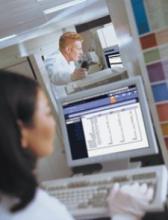Riding along in the car recently, my 13-year-old son told me that viewing a Holocaust dramatization and then meeting concentration-camp-survivor Marion Blumenthal Lazan at his school had brought tears to his eyes. I wish such evil did not exist in our children’s history books, but truly there is no better way than what he experienced to help this and future distant generations know and remember that era of suffering.
If you enjoy this content, please share it with a colleague
- Read more about Facing Patient Safety, and Making it Real
- Log in or register to post comments










